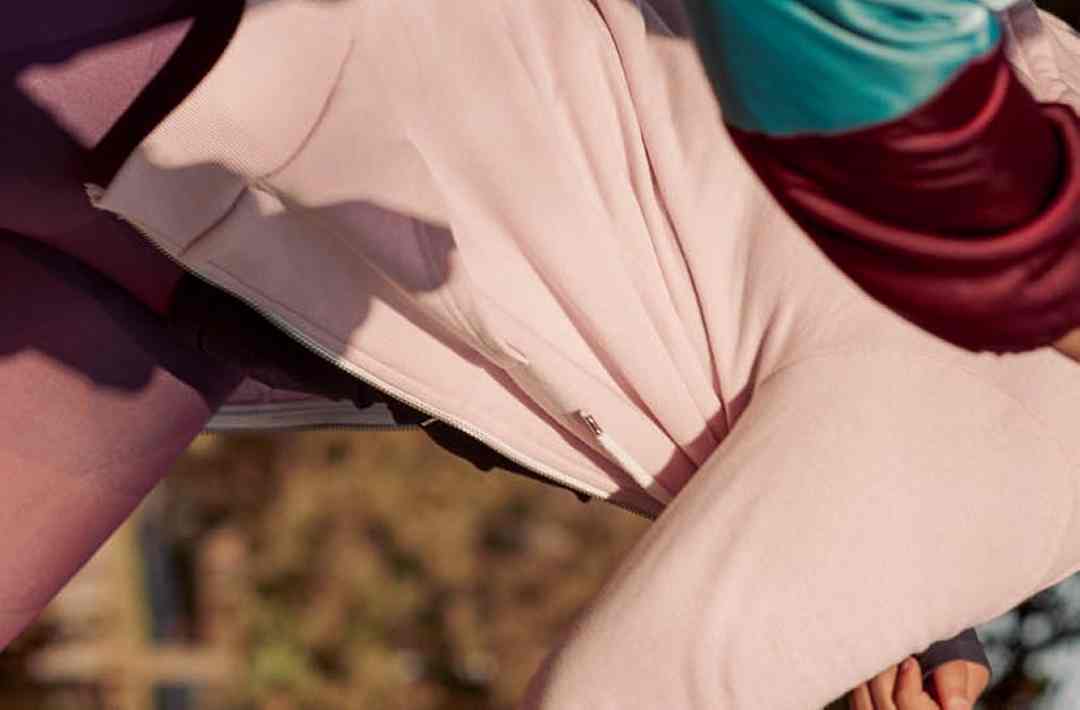About a week after Pennsylvania was under shelter-in-place orders but long before the CDC recommended wearing masks, my partner and I went out for an early morning walk around our block (without masks) in our West Philly neighborhood. We turned a corner and saw that a person who was not wearing a mask while running was coming toward us. We tried to get out of his way as quickly as we could, but there just wasn’t time to put six feet between him and us, particularly because he didn’t try to move out of our way. We flattened ourselves against a house, feeling the breeze created by his wake as he whizzed by maybe a foot away from us.
Now, of course I understand that the new coronavirus isn’t primarily spread by people running past other people. But we do have to acknowledge that it would not have been impossible in that scenario for either the runner or one of us to have transmitted the virus. Sure, at one time it seemed the only thing we had to be concerned about with respect to transmission was being within six feet of someone’s respiratory droplets—like someone coughing or sneezing near you—but it’s looking a lot more like coronavirus can travel farther and remain in the air longer than experts previously thought. (Be sure to read the story about how, after a choir rehearsal in Washington State where no one present was visibly ill, dozens of members ended up getting coronavirus, which has lead some experts to believe that it’s not just coughing or sneezing that can expel respiratory droplets, but also the kind of hard exhalation of breath that comes with singing. Or, you know, running.)
If my partner and I had been wearing masks and the jogger had been wearing a mask while running, the interaction would’ve been safer. It’s straight up a simple scientific fact—which is why I find arguments that people shouldn’t wear masks while running so absolutely confounding.
I’m not saying all this to say that if you run without a mask, you’re a public health menace. Or that the war against the coronavirus should be fought on one front only: the unmasked runner front. I’m also not saying that we should all lose our shit tallying up the ways we might possibly transmit or get this coronavirus. What I am saying is that it’s not OUTRAGEOUS or ALARMIST to feel nervous when someone without a mask on jogs by huffing and puffing. It’s neither outrageous nor alarmist to be pretty goddamn mad at people in your city who are running without a mask on.
The CDC recommends wearing cloth face coverings “in public settings where other social distancing measures are difficult to maintain (e.g., grocery stores and pharmacies).” Why? Well, experts believe that masks can reduce the amount of virus someone expels into the air when they breathe or cough, which could help reduce incidents of transmission.
Keep in mind that masks aren’t only recommended for people who know they’re sick. Yes, the advice on this has evolved as our understanding of this virus and the way it’s transmitted has evolved. We now know the virus can be transmitted before people have symptoms and, as SELF has reported, various estimates suggest that anywhere from 25% to 50% of all people who have COVID-19 may not have symptoms at any point in their illness. So if you didn’t buy or wear masks before because of previous guidance, that’s understandable; things have changed. We understand now that, in this situation, wearing a mask isn’t just about protecting yourself; it’s about protecting your community.
As Knvul Sheikh wrote in the New York Times:
In many Asian countries, everyone is encouraged to wear masks, and the approach is about crowd psychology and protection. If everyone wears a mask, individuals protect each other, reducing overall community transmission. The sick automatically have one on and are also more likely to adhere to keeping their mask on because the stigma of wearing one is removed.
Of course, as anyone who lives in an urban area or a densely populated neighborhood knows, grocery stores and pharmacies aren’t the only public settings where it’s difficult to maintain social distancing. Sidewalks get crowded, people turn corners unexpectedly, randos emerge from behind parked cars, and neighbors lurk just on the other side of doors, bus stops, or mailboxes. Even if I am rigorous and hypervigilant in my social distancing, I can’t control the person who doesn’t want to wait for me to finish taking out my trash before they walk by. I can’t stop a maskless runner from turning the corner and not noticing I’m there.
And by the way, you don’t have to live in the middle of New York City or another famously dense urban area to find yourself having to dodge maskless runners. In fact, if you are a runner who’s been psyched to get outside now that the weather is a bit nicer, surely you can relate to the rest of us who feel the same way and are outside because we want to go on walks or to garden or sit on our stoops without having to worry more than we already are simply by leaving our homes.
Basically we’re all trying to find ways to relieve stress, to feel like life is a little normal, to spend less time in our homes. None of us are alone in feeling that there is a thing we really need to be able to do for our mental health right now. It’s just that we have to make sure what we’re doing doesn’t get in anyone else’s way of prioritizing their mental health.
So maybe you run a little slower so breathing into a mask is less unpleasant. Maybe your daily 5-miler becomes your daily masked 2-miler. Maybe you go for a masked stroll instead of a run. Maybe you check out some of SELF’s great no-equipment-needed workouts (like our entire Spring 2020 Challenge) that you can do in your home or backyard. Maybe you take up journaling or meditating or stress baking. Maybe all three!
Most Popular
- 5 Less Obvious Signs of Seasonal Depression You Should Definitely Pay Attention To
By Maggie O’Neill
- 42 Creative Valentine’s Day Gifts for Guys
By Sarah Madaus
- Just Some Fun Sex Toys You and Your Partner Will Love
By Gabrielle Kassel
Right now is the moment to find new ways to care for our individual health because that’s what public health demands. And because we’re not out here just following rules for the sake of following rules. We’re out here living in a society. Sure, there’s no law that says that you can’t cut people in line or that you should flush the toilet at the coffeeshop after you’ve used it. But if you regularly cut people in line and failed to flush public toilets, you’d be a shitty member of a community and your actions would cause other people to feel angry and stressed. In our new pandemic reality, the norms themselves have changed, but our obligation to follow them has not.
The thing about sheltering in place, social distancing, wearing masks, washing our hands a lot—all the things we’re doing to protect ourselves and others from coronavirus—is that they are most effective (and honestly really only work) if pretty much everyone is following those protocols. Sure, you can not abide by those norms even if you have every tool at your disposal to make following them actually doable and feasible. But if you do that, you’d be a shitty member of a community and your actions would cause other people to feel angry and stressed.
So at a moment when people everywhere are desperate to reduce transmission, it’s time to just honor those group norms. It’s also a small but meaningful way to honor the fact that we’re all members of communities where people are rightfully really anxious right now, particularly people who are especially vulnerable or live with someone who is. It’s a way to honor the fact that our communities are filled with essential workers who can’t choose to stay home and who therefore risk exposure day in and day out. We can protect them a little more and also show our solidarity and gratitude by masking up. Self-care is important, but during a pandemic, community care is paramount.
If you’re not wearing a mask when you run because you’re 100% confident that this coronavirus can’t possibly be transmitted that way—again, this is completely unproven—consider what Sheikh says in that NYT story I mentioned above:
Masks are also an important signal that it’s not business as usual during a pandemic. They serve as a visual reminder to improve hand hygiene and social distancing. They may also serve as an act of solidarity, showing that all citizens are on board with the precautionary measures needed to bring infections under control.
In other words, wearing masks is good for social solidarity around preventing transmission, which in turn could also be good for public health. Even if you run at dawn every day and usually don’t run into another damn soul, throwing on a mask means that the local weirdo who wanders outside at around 5 a.m. to take out the trash (it’s me, I’m that weirdo) doesn’t have to worry as much when you jog past. Or when you put on a mask for your run, maybe someone on your block who’s looking out the window trying to muster the wherewithal to go outside will you see you being responsible, taking one for the team, and feel more confident getting outside for a walk—and putting on their mask instead of leaving it behind.
This pandemic has required that we all make sacrifices. And some of us—health care workers, people who deliver packages, grocery store employees, postal workers, any essential worker—are making the biggest ones. Wearing a mask while you run might suck—it might even mean that you can’t really do your usual workout—but in the grand scheme of this pandemic, it seems like a small sacrifice that’s very worth it.


